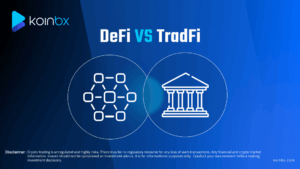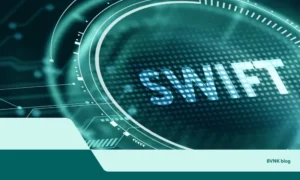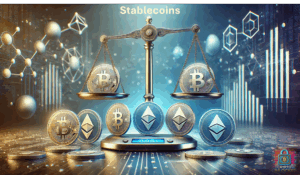In the ever-expanding world of decentralized finance (DeFi), few topics capture as much attention as staking, lending, and borrowing. These mechanisms have quickly become the backbone of DeFi protocols, reshaping how users earn, manage, and deploy their digital assets. But how exactly do they work, and why are they transforming the financial landscape at such speed? Let’s dive in.
The Rise of DeFi: A Quick Refresher
Traditional finance relies on intermediaries—banks, brokers, and institutions—to facilitate lending, borrowing, and earning interest. DeFi flips this script. By using blockchain technology and smart contracts, it enables users to transact directly with one another, without the need for middlemen.
At the core of this decentralized system are three pillars of participation: staking, lending, and borrowing. These functions not only allow users to put their crypto to work but also power the very protocols that define DeFi.
Staking: Putting Your Crypto to Work
Think of staking as the DeFi equivalent of depositing money in a savings account—but with higher rewards and more risks.
What is Staking?
Staking involves locking up your cryptocurrency in a blockchain network to support its operations, particularly transaction validation. In proof-of-stake (PoS) blockchains like Ethereum 2.0, Cardano, or Solana, stakers help secure the network. In return, they earn rewards in the form of newly minted tokens or transaction fees.
Why Stake?
- Earn Passive Income – Stakers can generate attractive yields, sometimes significantly higher than what traditional savings accounts offer.
- Support the Network – By staking, users directly contribute to the security and efficiency of the blockchain.
- Low Barrier to Entry – With staking pools, even users with small amounts of crypto can participate.
Risks of Staking
Of course, it’s not risk-free. Market volatility can erode staking rewards, and in some cases, penalties (slashing) apply if validators behave dishonestly or fail to stay online.
Lending in DeFi: Becoming Your Own Bank
In the traditional world, banks take your deposits and lend them out to borrowers, keeping most of the profit for themselves. In DeFi, the model is flipped—you become the bank.
How DeFi Lending Works
Through decentralized lending platforms like Aave, Compound, and MakerDAO, users can supply liquidity by depositing their crypto into smart contract–based lending pools. Borrowers can then access these funds, usually by providing collateral.
For example, if you deposit USDC (a stablecoin) into Aave, your funds become available for borrowers while you earn interest. The rates are determined algorithmically by supply and demand, making the system dynamic and transparent.
Benefits of Lending
- Attractive Yields – Lenders often enjoy higher returns than traditional savings or bonds.
- Automated and Transparent – Smart contracts handle everything without the need for banks.
- Liquidity on Demand – Many platforms allow lenders to withdraw their assets at any time.
Risks of Lending
- Smart Contract Vulnerabilities – Bugs or exploits in code can lead to losses.
- Overcollateralization – While this protects lenders, it can limit borrower participation.
- Market Risk – The collateral value can drop suddenly, leading to liquidation.
Borrowing in DeFi: Unlocking Liquidity
Why would anyone borrow in DeFi if they already have crypto? The answer lies in liquidity and strategy.
How DeFi Borrowing Works
To borrow assets, users must provide collateral—usually in the form of crypto that exceeds the value of the loan. This overcollateralization ensures lenders are protected. For example, depositing $1,500 worth of ETH could allow you to borrow $1,000 in stablecoins.
Why Borrow?
- Access Liquidity Without Selling – Users can unlock cash without giving up long-term crypto holdings.
- Leverage Trading – Borrowed funds can be used to amplify investment positions.
- Tax and Portfolio Strategies – In some jurisdictions, borrowing against crypto avoids taxable events compared to selling assets.
Borrowing Risks
- Liquidation Risk – If the value of your collateral falls below a certain threshold, your assets may be liquidated.
- Interest Rate Volatility – Borrowing costs can fluctuate significantly in times of high demand.
- Collateral Lockup – Assets tied up as collateral are not available for other uses.
The Symbiotic Relationship
Staking, lending, and borrowing don’t operate in silos—they form an interconnected ecosystem.
- Stakers secure networks, enabling DeFi applications to run smoothly.
- Lenders provide liquidity that borrowers use for leverage or liquidity needs.
- Borrowers, in turn, drive demand, creating opportunities for lenders.
It’s a cycle that sustains the entire DeFi economy, with smart contracts acting as the trusted intermediaries.
Key Platforms Leading the Way
Several protocols dominate the staking, lending, and borrowing landscape:
- Ethereum – The largest ecosystem for staking and DeFi apps.
- Aave – A pioneer in lending and borrowing with features like flash loans.
- Compound – Known for algorithm-driven interest rate models.
- MakerDAO – The protocol behind DAI, a decentralized stablecoin backed by collateral.
These platforms have set the stage for DeFi’s growth, but new challengers are emerging every day with innovative models.
The Risks and the Road Ahead
While DeFi offers incredible opportunities, it’s not without risks. Smart contract hacks, regulatory uncertainty, and extreme market volatility remain significant hurdles. Yet, the innovation shows no sign of slowing down.
Looking ahead, improvements in cross-chain interoperability, risk management tools, and regulatory clarity may further legitimize DeFi and draw mainstream adoption. Imagine a world where borrowing against your crypto becomes as normal as taking a mortgage—except without the bank in the middle.
Final Thoughts
DeFi staking, lending, and borrowing are rewriting the rules of finance. By giving individuals the power to earn, lend, and borrow without banks, DeFi has opened doors that were once locked to many. But with great opportunity comes responsibility—users must balance rewards with risks.
Whether you’re staking to secure a blockchain, lending to earn yields, or borrowing to unlock liquidity, one thing is clear: DeFi isn’t just a financial experiment anymore—it’s the future of money in motion.










